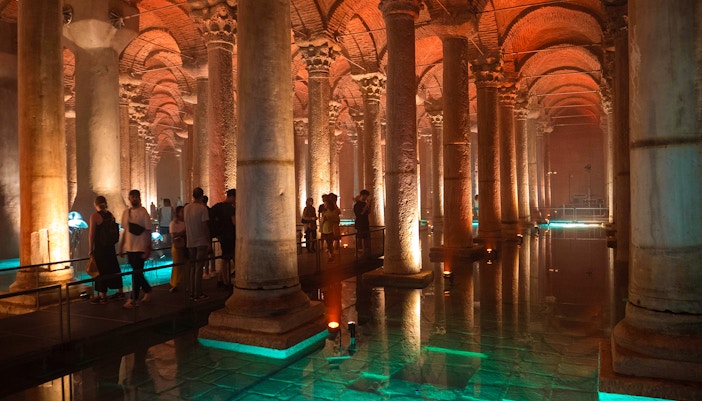6th Century
The construction of the Basilica Cistern was commissioned by Byzantine Emperor Justinian I in the 6th century CE. It was built to supply water to the Great Palace and other buildings in the city. It features a vast network of vaulted ceilings supported by 336 marble columns. Many of the columns were repurposed from earlier structures, and some of them bear engravings and carvings from earlier civilizations, including the Roman and Greek eras.






